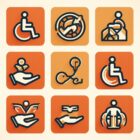How Unemployment Influences Stamp Benefits

Have you ever wondered how unemployment impacts your eligibility for stamp benefits? Well, buckle up and get ready for some eye-opening insights.
In this article, we’ll delve into the intricate relationship between unemployment and stamp benefits. We’ll explore the eligibility requirements, how unemployment affects eligibility, and even dive into the nitty-gritty of calculating stamp benefits during periods of unemployment.
So, if you’re looking to maximize your benefits while unemployed, keep reading – we’ve got you covered.
Key Takeaways
- Unemployment can potentially qualify individuals for SNAP benefits by lowering their income.
- Unemployment benefits are considered as income when determining eligibility for SNAP benefits, but depending on the amount, it may push income over the eligibility limit and make individuals ineligible.
- Total gross monthly income, including unemployment benefits, is considered when calculating stamp benefits during periods of unemployment.
- The lack of income due to unemployment can decrease the amount of stamp benefits received, as the SNAP program uses an income-based formula to determine benefit amounts.
Eligibility Requirements for Stamp Benefits
To qualify for stamp benefits, you must meet certain eligibility requirements. These requirements are put in place to ensure that the benefits are distributed to those who truly need them.
One of the primary eligibility requirements is based on income. The program sets income limits, which vary depending on the size of your household. For example, a household of one may have a different income limit than a household of four. Additionally, the program takes into account your assets, such as savings and property. If your income and assets fall below the established limits, you may be eligible for stamp benefits.
Another important eligibility requirement is related to employment status. In order to qualify for stamp benefits, you must meet certain work requirements. Generally, able-bodied adults without dependents between the ages of 18 and 49 are required to work or participate in a work program for at least 20 hours per week. However, there are exemptions for individuals who are unable to work due to physical or mental health conditions or caring for a disabled family member.
Lastly, eligibility may also be affected by citizenship or immigration status. In most cases, you must be a U.S. citizen or a qualified non-citizen to receive stamp benefits. However, certain categories of non-citizens, such as refugees and asylees, may be eligible as well.
How Unemployment Affects Stamp Benefit Eligibility
Unemployment can impact your eligibility for stamp benefits. When you apply for Supplemental Nutrition Assistance Program (SNAP) benefits, also known as food stamps, one of the key eligibility criteria is your income level. If you’re unemployed, your income will likely be significantly lower, which could potentially qualify you for SNAP benefits.
The United States Department of Agriculture (USDA) sets income guidelines for SNAP eligibility. These guidelines take into account the size of your household and the gross monthly income. Gross monthly income includes wages, salaries, tips, and other forms of income before any deductions are made. If your income falls below the income limit set by the USDA for your household size, you may be eligible for SNAP benefits.
However, it’s important to note that unemployment benefits are considered as income when determining eligibility for SNAP benefits. If you’re receiving unemployment benefits, this income will be included in the calculation of your total gross monthly income. Depending on the amount of your unemployment benefits, it may push your income over the eligibility limit, making you ineligible for SNAP benefits.
Calculating Stamp Benefits During Periods of Unemployment
When you’re unemployed, calculating your stamp benefits during this period requires considering your total gross monthly income, including any unemployment benefits you receive. The Supplemental Nutrition Assistance Program (SNAP), commonly known as food stamps, takes into account your income and household size to determine the amount of benefits you’re eligible for.
To calculate your stamp benefits, start by adding up all sources of income you receive each month, including unemployment benefits, wages from any part-time work, and any other sources of income. This total gross monthly income is then compared to the federal poverty guidelines, which vary depending on the size of your household. The SNAP program uses a formula that takes into account the net income after deductions and multiplies it by 30% to calculate the amount of stamp benefits you’ll receive.
It is important to note that unemployment benefits are considered income for the purpose of calculating stamp benefits. Therefore, if you receive unemployment benefits, they’ll be factored into the calculation of your total gross monthly income.
Transition: Now that you understand how stamp benefits are calculated during periods of unemployment, let’s explore the impact of unemployment on the amount of stamp benefits you may receive.
Impact of Unemployment on the Amount of Stamp Benefits
During periods of unemployment, the amount of stamp benefits you’re eligible for can be significantly influenced by your lack of income. When you’re employed, your income is taken into account when determining the amount of stamp benefits you receive. However, when you’re unemployed, your lack of income can lead to a decrease in the amount of benefits you’re eligible for.
The Supplemental Nutrition Assistance Program (SNAP), which provides stamp benefits, uses an income-based formula to determine benefit amounts. The formula takes into consideration factors such as household size, income, and expenses. When you have no income due to unemployment, your household’s total income decreases, which can result in a reduction in the amount of stamp benefits you receive.
For example, if you were previously employed and earning a decent income, you may have been eligible for a higher amount of stamp benefits. However, once you become unemployed, your income drops to zero, and this decrease in income could lead to a decrease in the amount of stamp benefits you receive.
Understanding the impact of unemployment on the amount of stamp benefits you’re eligible for is crucial in order to navigate the challenges of unemployment effectively. By being aware of how your lack of income can influence your benefits, you can take proactive steps to maximize the assistance you receive while unemployed.
Transition: Now that we’ve discussed the impact of unemployment on the amount of stamp benefits, let’s explore strategies for maximizing these benefits while you’re unemployed.
Strategies for Maximizing Stamp Benefits While Unemployed
To maximize your stamp benefits while unemployed, it’s important to employ effective strategies.
One strategy is to carefully plan and budget your grocery shopping. By creating a shopping list and sticking to it, you can ensure that you only purchase necessary items and avoid impulse buying. Additionally, taking advantage of sales and discounts can help stretch your stamp benefits further. Shopping at discount stores or using coupons can significantly reduce your grocery bill, allowing you to save money for other essential expenses.
Another strategy is to cook meals at home instead of eating out. Preparing your own meals not only saves money but also gives you more control over the ingredients and portion sizes. You can make large batches of meals and freeze them for later use. This way, you can have ready-to-eat meals whenever you need them, without the need to spend extra money on takeout or fast food.
Furthermore, consider joining a community-supported agriculture program or shopping at farmers’ markets. These options often provide fresh, locally sourced produce at lower prices compared to supermarkets. Additionally, some programs allow you to pay with stamp benefits, making it a cost-effective way to access nutritious food.
Lastly, it’s crucial to stay informed about any changes or updates to the stamp benefits program. Government policies and regulations can impact the amount and eligibility criteria for stamp benefits. By staying up to date, you can ensure that you’re maximizing the benefits available to you.
Frequently Asked Questions
How Long Can Someone Receive Stamp Benefits While Unemployed?
You can receive SNAP benefits while unemployed for a limited time. The duration varies by state and is typically based on factors such as income, household size, and assets.
Can Individuals Receive Stamp Benefits if They Are Receiving Unemployment Benefits?
Yes, individuals can receive SNAP benefits while receiving unemployment benefits. The two programs serve different purposes and eligibility for SNAP is determined by income and household size, not by unemployment status.
Will Unemployment Benefits Be Considered as Income When Calculating Stamp Benefits?
Unemployment benefits are considered as income when calculating stamp benefits. This means that if you receive unemployment benefits, it will be taken into account when determining your eligibility and the amount of stamp benefits you may receive.
Are There Any Additional Resources Available to Unemployed Individuals Who Receive Stamp Benefits?
There are additional resources available to you if you are unemployed and receive stamp benefits. These resources can include job training programs, career counseling services, and job placement assistance to help you find employment.
Can Individuals Still Receive Stamp Benefits if They Find Part-Time Employment While Unemployed?
Yes, individuals can still receive stamp benefits if they find part-time employment while unemployed. The amount of benefits received may be adjusted based on income, but it is still possible to qualify.



